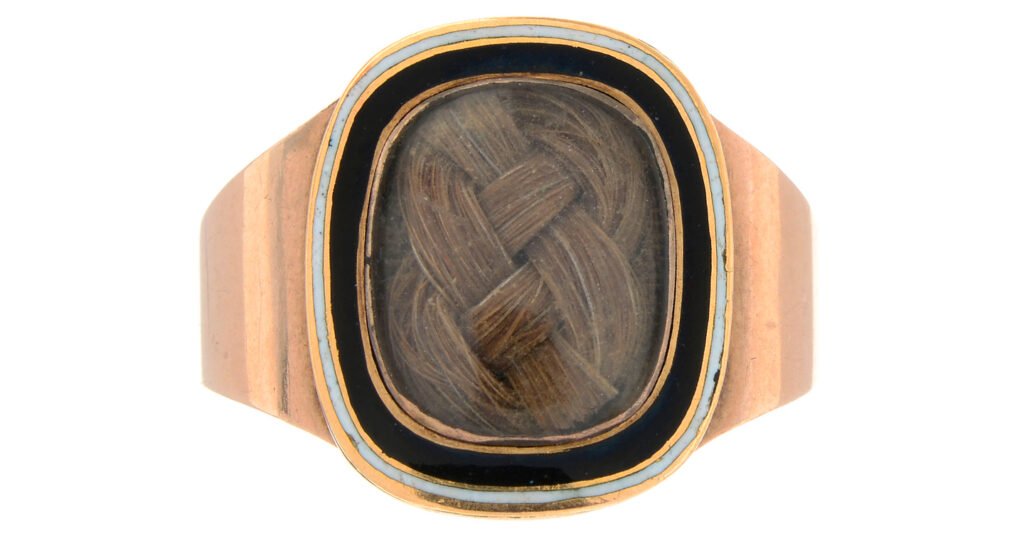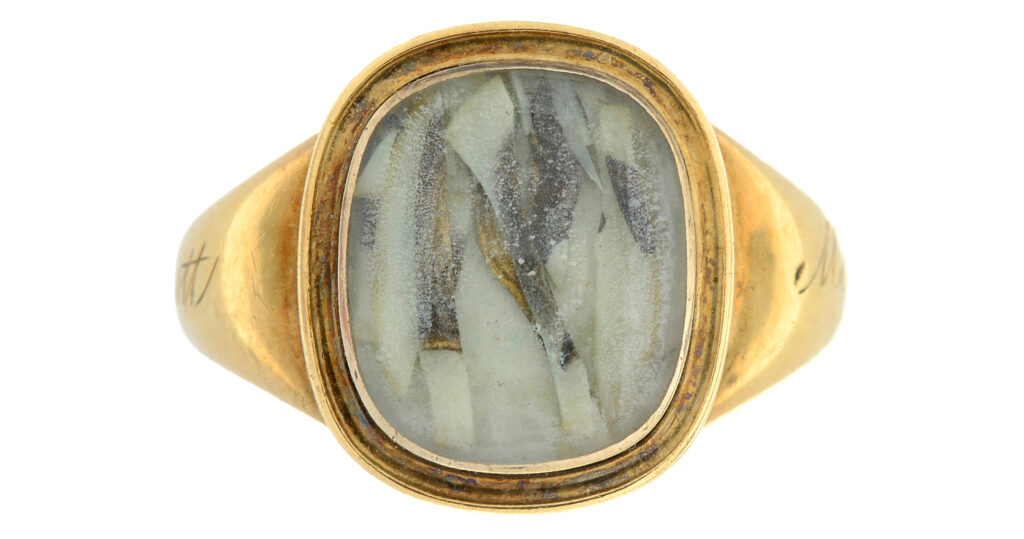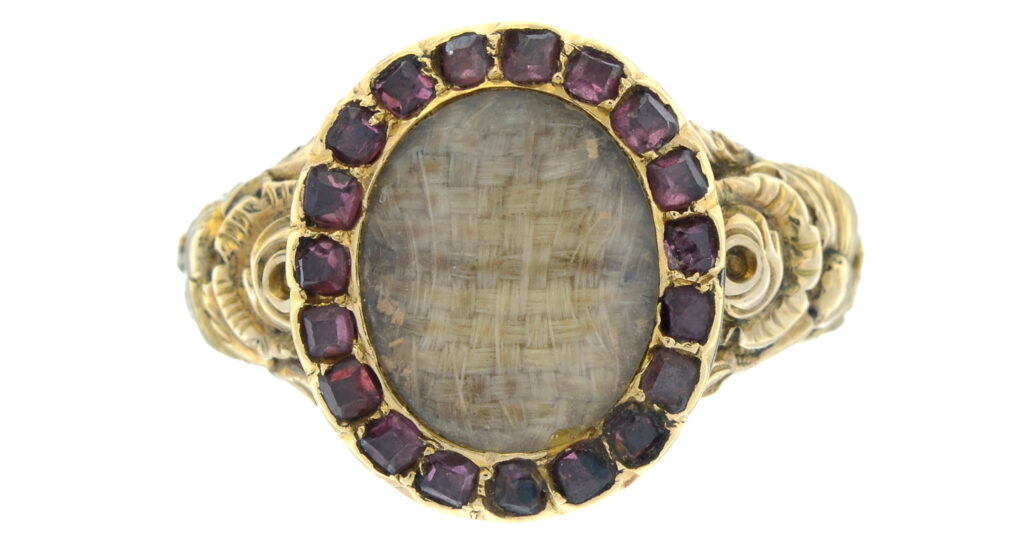Mourning Rings, Ancient to Early Modern
Unlike any other form of memorial jewellery, rings show the greatest evolution over time. This is due to the nature of rings having a varying degree of quality, making them accessible to the poorer classes and never leaving mainstream fashion.
Previous to the 17th Century and the rise of more recognisable ‘memorial’ jewellery, pieces to commemorate a loved one, event or as a gift were prevalent in societies dating to the ancient. The example to the left, from Miller’s Cameos Old and New, depicts an earlobe being pinched, with the inscription ‘MNHMONEYE MOY’ – ‘Remember Me’. This example is 3rd Century Roman and at its most fundamental level is a cameo of and only qualifies as a ring due to its elegant 18th Century setting. Culturally, pieces with remembrance inscriptions can be traced back to different cultures, so beginning to talk about rings from the 17th and 18th Centuries is only a direct relation to the beginning of the modern form.
As discussed in other sections, a piece with that denotes ‘memento mori’ does not indicate a mourning piece. The motifs used in memento mori jewellery lay the groundwork for the mourning mentality, such as skulls, skeletons, hourglasses and other symbols of mortality, but only by the 17th Century, or more appropriately during the Stuart Era, did this form of jewellery being to take on a personal mourning ideal. One of the earliest ‘modern’ mourning rings can be dated back to the fifteenth century. This piece, inscribed ‘iohes godefroy‘ was decorated with skulls and a worm; one of the earliest pieces to adapt the memento mori motifs.







